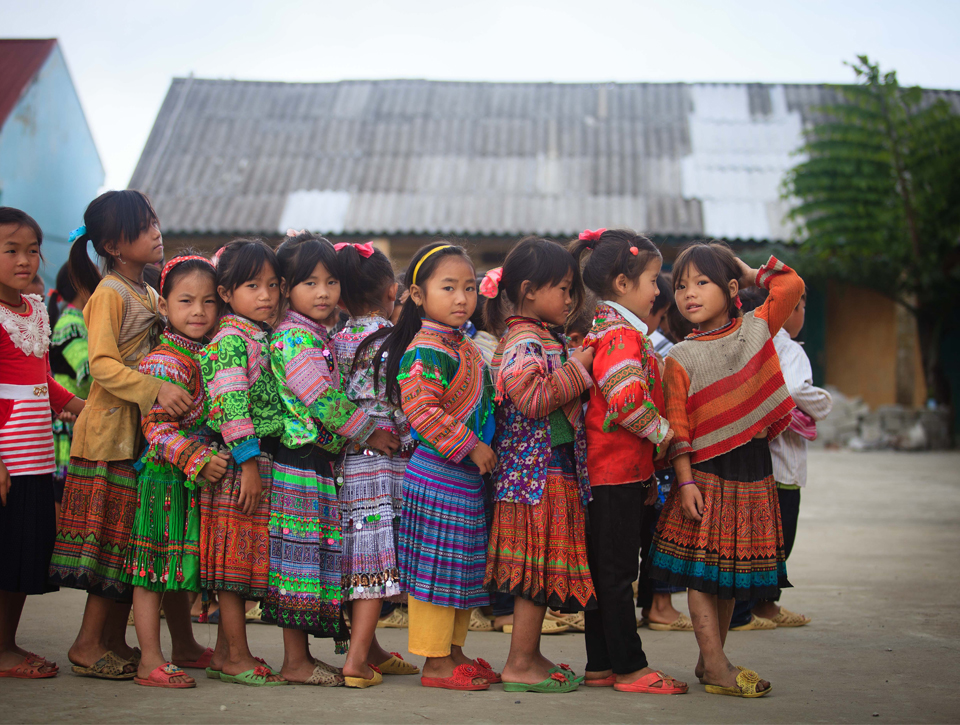Introduction
Gender equality and inequality concern how people live their daily lives, their relationships, choices, decisions and the freedom they do or do not have to live a life they value. Gender equality is a matter of social justice and human rights. It drives development progress. It is vital for achieving peaceful, inclusive, resilient and just societies.
The concept of equality between women and men was articulated in the Universal Declaration of Human Rights in 1948, then reinforced in international agreements including the 1979 Convention on the Elimination of All Forms of Discrimination against Women (CEDAW) and the 1995 Beijing Declaration and Platform for Action. Progress has been made, yet substantive gender equality remains elusive.
At the 70th Session of the United Nations General Assembly in September 2015, the international community adopted a new global development agenda, Transforming our World: the 2030 Agenda for Sustainable Development – a plan of action for people, planet and prosperity that seeks to realize the human rights of all and achieve gender equality and the empowerment of all women and girls (United Nations, 2015a).
Realizing substantive and lasting gender equality requires bold, urgent action in the new agenda (Box 1), including recognition of how societies create and reinforce everyday discriminatory norms, stereotypes and practices relating to gender. It also requires understanding one’s own values, the values of one’s community and society, and those of others around the world. Moreover, transformative action is needed to redress complex, deeply embedded inequality.
Transformative action is needed to redress gender inequality that is deeply embedded and complex
Education and lifelong learning-broadly defined to include formal, non-formal and informal learning-play vital role in achieving gender equality. Education can be a focus of gender inequality, where stereotypical behavior and views are reinforced or a catalyst of transformation, providing individual with opportunity and capability to challenge and change discriminatory attitudes and practices. As we move into a new era of international development, framed by progress on the 17 Sustainable Development Goals (SDGs), links between education and gender equality are clearly recognized, building on acknowledgement since the beginning of the Education for All (EFA) movement that improving girls’ education and ensuring equitable educational opportunities for all girls and boys is necessary for social justice on a global scale. Education and gender equality are central concerns in the new sustainable development agenda. The Education 2030 Framework for Action, agreed by the global education community in November 2015 to accompany the SDG agenda, recognizes that gender equality is inextricably linked to the right to education for all, and that achieving gender equality requires an approach that ‘ensures that girls and boys, women and men not only gain access to and complete education cycles, but are empowered equally in and through education’ (UNESCO,2016a,p.8).
Women, girls, boys and men all need to be given opportunities for active participation in society, for their voices to be heard and their needs met (UN Women, 2016a).
To facilitate and achieve this, better evidence-based knowledge and understanding of gender issues in and through education are needed. The Gender Review of the 2016 Global Education Monitoring Report (GEM Report) recognizes and largely focuses on the challenges facing girls and women because of the disproportionate overall disadvantage they continue to experience in and beyond education. But it also understands that gender disadvantage can be experienced by boys and men, and that gender equality involves males, relationships and power. Gender inequality affects us all. Achieving gender equality must involve us all.
The Gender Review discusses global and regional trends in achieving parity in education access, participation and completion and in selected learning outcomes, stressing that there is much room for progress. It then shifts to an evidence-based discussion of relationships between education, gender and sustainable development by discussing work, civic and political engagement and leadership, as well as health and well-being. It concludes with ways forward: what action is implied by evidence and data for achieving more gender-equal societies and how progress towards such societies is to be measured.
Gender inequality affects us all. Achieving gender equality must involve all of us
BOX 1
Gender quality and the 2030 Agenda for Sustainable Development
The 2030 Agenda for Sustainable Development unites global development and environmental goals in one framework. It is designed to address key human rights challenges of the 21st century, including poverty and inequality. Its development was commended for wide-ranging consultative and partipatory processes involving United Nations (UN) agencies, intergovernmental working groups, academics, and technical experts, and women’s rights organizations and other civil society representatives. A series of ‘global conversations’ engaged almost 2 million people across 88 countries.
The 2030 Agenda heralds a new era for women’s rights and gender equality. Its content has been praised by those working in gender and development, as has its commitment to realizing the human rights of all people-women, girls, boys and men, including the most marginalized. The ‘leave no one behind’ principle, which is at the agenda’s heart, rests on the collective belief that the benefits of development must be shared by all, shifting the agenda from equality of opportunity to equality of outcome.
The targets of the stand-alone gender goal, SDG 5, are core to achieving gender equality and women’s empowerment- a condition for achieving all the SDGs, including SDG 4, quality education for all, which includes a target focused on gender equality in education, and SDG 8, economic growth and decent work for all. UN Women advocates gender mainstreaming as an essential strategy to achieve SDG 5 and sustainable development, making gender equality a central ideal embodied in the structures and practices of institutions and all of society. In national and local governments, gender mainstreaming can address gender equality within and across a broad range of sectors by integrating a gender perspective in policy, programming and budgeting across ministries. Such initiatives need adequate resources, awareness and training for women and men in gender-sensitive strategy and gender responsive budgeting.
For the 2030 Agenda to fulfil its potential and for gender equality and the empowerment of women and girls to be achieved, the challenges include addressing complex and intersecting inequality; breaking barriers that cause people, particularly the most marginalized, to be ‘left behind’; developing strong, effective policies, ensuring distribution of adequate resources; developing effective data collection, along with monitoring and evaluation systems; and fostering collective and inclusive action.
Sources: Sweetman et al. (2016); UN Women (2014, 2016b)
Foreword
In May 2015, the World Education Forum in Incheon (Republic of Korea), brought together 1,600 participants from 160 countries with a single goal in mind, how to ensure inclusive and equitable quality education and lifelong learning for all by 2030?
The Incheaon Declaration for Education 2030 has been instrumental to shape the Sustainable Development Goal on Education to “Ensure inclusive and equitable quality education and promote lifelong learning opportunities for all”. It entrusts UNESCO with the leadership, coordination and monitoring of the Education 2030 agenda. It also calls upon the Global Education Monitoring (GEM) Report to provide independent monitoring and reporting of the Sustainable Development Goal on Education (SDG 4), and on education in the other SDGs, for the next fifteen years.
The ultimate goal of this agenda is to leave no one behind. This calls for robust data and sound monitoring. The 2016 edition of the GEM Report provides valuable insight for governments and policy makers to monitor and accelerate progress towards SDG 4, building on the indicators and targets we have, with equity and inclusion as measures of overall success.
This Report makes three messages starkly clear.
Firstly, the urgent need for new approaches. On current trends only 70% of children in low income countries will complete primary school in 2030, a goal that should have been achieved in 2015. We need the political will, the policies, the innovation and the resources to buck this trend.
Secondly, if we are serious about SFG 4, we must act with a sense of heightened urgency, and with long-term commitment. Failure to do so will not only adversely affect education but will hamper progress towards each and every development goal: poverty reduction, hunger eradication, improved health, gender equality and women’s empowerment, sustainable production and consumption, resilient cities, and more equal and inclusive societies. Lastly, we must fundamentally change the way we think about education and its role in human well-being and global development. Now, more than ever, education has a responsibility to foster the right type of skills, attitudes and behavior that will lead to sustainable and inclusive growth.
The 2030 Agenda for Sustainable Development call on us to develop holistic and integrated responses to the many social, economic, and environmental challenges we face. This means reaching out beyond traditional boundaries and creating effective, cross-sectoral partnerships.
A sustainable future for all is about human dignity, social inclusion and environmental protection. It is a future where economic growth does not exacerbate inequalities but builds prosperity for all; where urban areas and labour markets are designed to empower everyone and economic activities, communal and corporate, are green-oriented. Sustainable development is a belief that human development cannot happen without a healthy planet. Embarking upon the new SDG agenda requires all of us to reflect upon the ultimate purpose of learning throughout life. Because, if done right, education has the power like non else to nurture empowered, reflective, engaged, and skilled citizens who can chart the way towards a safer, greener and fairer planet for all. This new report provides relevant evidence to enrich these discussions and craft the policies needed to make it a reality for all.
Irina Bokova
Director-General of UNESCO
Foreword
The 2016 Global Education Monitoring Report (GEM Report) is both masterful and disquieting. This is a big report: comprehensive, in-depth and perspicacious. It is also an unnerving report. It establishes that education is at the heart of sustainable development and the Sustainable Development Goals (SDGs), yet it also makes clear just how far away we are from achieving the SDGs. This report should set off alarm bells around the world and lead to a historic scale-up of actions to achieve SDG 4.
The GEM Report provides an authorative account of how education is the most vital input for every dimension of sustainable development. Better education leads to greater prosperity, improved agriculture, better health otucomes, less violence, more gender equality, higher social capital and an improved natural environment. Education is key to helping people around the world understand why sustainable development is such a vital concept for our common future. Education gives us the key tools-economic, social, technological, even ethical-to take on the SDGs and to achieve them.
These facts are spelled out in exquisite and unusual detail throughout the report. There is a wealth of information to be mined in the tables, graphs, and texts. Yet the report also emphasizes the remarkable gaps between where the world stands today on education and where it has promised to arrive as of 2030. The gaps in educational attainment between rich and poor, within and between countries, are simply appalling. In many poor countries, poor children face nearly insurmountable obstacles under current conditions. They lack books at home; have no opportunity for pre-primary school; and enter facilities without electricity, water, hygiene, qualified teachers, textbooks and the other appurtenances of basic education, much less a quality education.
The implications are staggering. While SDG 4 calls for universal completion of upper secondary education by 2030, the current completion rate in low-income countries is a meagre 14% (Table 10.3 of the full report).
The GEM Report undertakes an important exercise to determine how many countries will reach the 2030 target on the current trajectory, or even on a path that matches the fastest improving country in the region. The answer is sobering: we need unprecedented progress, starting almost immediately, in order to have a shot at success with SDG 4.
Cynics might say, “We told you, SDG 4 is simply unachievable,’ and suggest that we accept that ‘reality’. Yet as the report hammers home in countless ways, such complacency is reckless and immoral.
If we leave the current young generation without adequate schooling, we doom them and the world to future poverty, environmental ills, and even social violence, and instability for decades to come. There can be no excuse for complacency. The message of this report is that we need to get our act together to accelerate educational attainment in an unprecedented manner.
One of the keys for acceleration is financing. Here again, the report makes for sobering reading. Development aid for education today is lower than it was in 2009 (Figure 20.7 of the full report).
This is staggeringly short-sighted of the rich countries. Do these donor countries really believe that they are ‘saving money’ by underinvesting in aid for education in the world’s low-income countries?
After reading this report, the leaders and citizens in the high income world will be deeply aware that investing in education is fundamental for global well-being, and that the current level of aid, at around US$5 billion per year for primary education-just US$5 per person per year in the rich countries! – is tragically small investment for the world’s future sustainable development and peace.
The 2016 GEM Report provides a plethora of insights, recommendations and standards for moving forward. It offers invaluable suggestions on how to monitor and measure progress on SDG 4.
It demonstrates by example the feasibility of far more refined measures of education inputs, quality and achievement than the often crude measure of enrolment and completion that we rely on today. Using big data, better survey tools, facility monitoring and information technology, we can get far more nuanced measures of the education process and outcomes at all levels. Fifteen years ago the world finally recognized the enormity of the AIDS epidemic and other health emergencies and took concrete steps to scale up public health interventions in the context of the Millennium Development Goals. Thus were born major initiatives such as the Global Fund to Fight AIDS, Tuberculosis and Malaria, the Global Alliance for Vaccines and Immunisation (now Gavi, the Vaccine Alliance) and many other examples. These efforts led to a dramatic upturn in public health interventions and funding. While it did not achieve all that was possible (mainly because the 2008 financial crisis ended the upswing in public health funding) it did lead to many breakthroughs whose effects continue to be felt today.
The 2016 GEM Report should be read as a similar call to action for education as the core of the SDGs. My own view, often repeated in the past couple of years, is the urgency of a Global Fund for Education that builds on the positive lessons of the Global Fund for AIDS, Tuberculosis and Malaria. The financing constraint lies at the very heart of the education challenge, as this report makes vividly clear through every bit of cross-national and household-based data.
This compelling document calls on us to respond to the opportunity, urgency and declared global goal embodied in SDG 4: universal education of good quality for all and opportunities for learning throughout life. I urge people everywhere to study this report carefully and take its essential messages to heart. Most importantly, let us act on them at every level, from the local community to the global community.
Jeffrey D. Sachs
Special Adviser to the UN Secretary-General on the
Sustainable Development Goals


